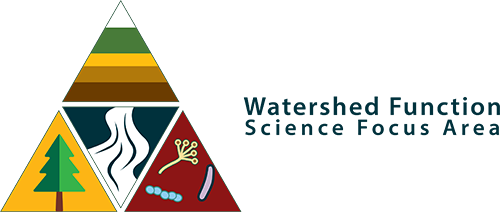As it’s been some time since my last email update with news, updates, and safety reminders, I wanted to get a condensed version out as we move into the busy field season.
- Following what was a big snow year for Colorado and Crested Butte, we’ve had a relatively cold and wet May that has suppressed melt and runoff. From a water perspective, this is very good news, with the exception of runoff forecasting, which has been hampered by the unseasonably cool weather. From a field access perspective, however, it’s proving to be challenging. We anticipate that the County Road out to Gothic will be open soon, although vehicular access won’t be possible past RMBL for the foreseeable future. Those with field sites upstream of Gothic will need to be prepared to hike, ski, snowshoe, as warranted.
- We successfully completed the first Airborne Snow Observatory (ASO) flight of the year during the so-called “Peak Snow Water Equivalent” period in early April. For those who haven’t yet enjoyed the opportunity to dig snow pits tied to these ASO overflights, I wanted to provide two short “virtual site visits” depicting both pit digging and snow sampling. I hope you enjoy and can envision yourselves helping out next year! A second ASO flight is being used to evaluate regions of preferential snow retention within the Ohio Creek-East River-Taylor River study area; it’s planned for this Sunday-Monday (weather allowing).
- Snow conditions at the higher elevations are still quite deep for this time of year. Indeed, for those with field sites at higher elevations, access will be challenging for quite a while to come. Courtesy of Wendy and Tony Brown, photos of current conditions at the Lower Subalpine and Upper Subalpine field sites along the Washington Gulch elevation gradient will give you a virtual sense of what can be expected if you’re planning to head up soon. For those on Kate Maher’s (Stanford) team, it might be worth looking at those from the Upper Subalpine site, as that’s the approach area for your Rock Creek study area.
- Snow conditions at the two SNOTEL stations (Butte and Schofield) tell a similar story. Below is a very nice figure prepared by Rosemary Carroll that depicts a variety of recent snow years for comparison with 2019 along with corresponding river discharge for the East River at Almont. The aforementioned cool, wet weather in May has suppressed runoff of late; however, a lot of snow-bound water remains, and if we get a sustained warm up period, this melt could make for some very abrupt increases in discharge and flooding / over-banking along the river bottoms.
- Related to these large increases in discharge, please use EXTREME caution when working along the river corridor. Indeed, unless absolutely essential and your training permits working within the river during the rising and falling limbs of the hydrograph, please stay out of the rivers at this time. Given her depth of knowledge and involvement with the stream gauging network, please reach out to Rosemary Carroll (Rosemary.Carroll@dri.edu) should you have specific questions about river conditions and whether access is (un)safe.
- In April, we had an exciting field deployment of a novel electrochemical monitoring system performed as part of DOE’s Small Business Innovative Research (SBIR) Program. The project, led by Dr. Don Nuzzio, is described more fully in this new “Meet the Scientist” video. In brief, it uses a submerged electrode system to electrochemically quantify a variety of aqueous metals and compounds in various streams within the watershed.
- Field teams from the SLAC SFA led by John Bargar are currently in the field. Additionally, various members of our collaborating groups from Stanford, UMASS, Univ. Illinois – Chicago, and elsewhere are arriving daily and starting up the field work season. Stay safe, warm, and dry out there folks!
- With the incredible help of Chelsea Wilmer, Amanda Henderson, and Tony Brown, we’ve had tremendous success this year with the early snowmelt manipulation experiments. Snowmelt tarps have been removed at both the Lower and Upper Montane sites with significant advancement of the first snow-free day at both locations. The tarps are still deployed at the Lower Subalpine site with roughly 40-50 cm of snow still remaining underneath the tarped areas; un-tarped control areas have 100 cm remaining. Tarps have yet to be deployed at the Upper Subalpine site given >240 cm of snow still remaining at that elevation.
- As food for thought, I wanted to share a well-produced, short video describing ranching-related research activities pursued by the Archbold Biological Station (Florida) at their Buck Island Ranch Along with my fellow RMBL Board members, I had the opportunity to visit Buck Island recently and I couldn’t have been more inspired by their studies investigating the many positive benefits of well managed land use on both hydrologic and biogeochemical processes. Given the strong legacy of ranching and irrigated agriculture in the East River and Ohio Creek drainages, the Buck Island model might potentially represent an interesting one with which to engage local ranchers in our watershed. For those with an interest in such topics or with faculty friends working in this space, I might suggest reaching out to myself and Ian Billick (ibillick@gmail.com), Executive Director of RMBL.
- Lastly, I wanted to share a photo forwarded to me yesterday by Rosemary that highlights the beauty of the site this time of year. It was taken by Connor Scalbom, who is doing some amazing photographic work in the valley.







